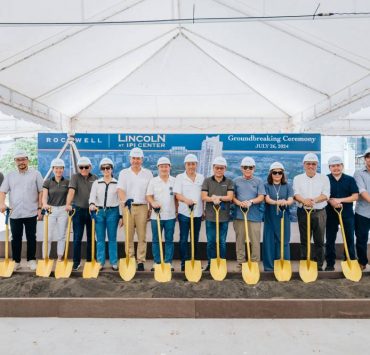Don’t go loco over POGO

In his State of the Nation Address earlier this week, President Ferdinand Marcos Jr. declared and ordered the banning of Philippine offshore gaming operators (POGOs).
This created a lot of noise, especially in the property market given that some developers aggressively chased the additional demand from this sector from 2017 to 2019.
As my colleagues from Colliers Philippines’ Office Services-Tenant Representation team highlighted in their latest release “PBBM bans all Philippine offshore gaming operators,” the share of office space occupied by the sector has already been dwindling.
At the peak of POGO demand in 2019, these offshore gaming firms from China occupied about a tenth of total leasable office space in Metro Manila. This is down to only about 3.5 percent as of this writing.
Latest office deals from POGOs have been ‘sporadic’ at best. It appears that the sector is no longer a major player in terms of office space take-up in Metro Manila, with the latest Colliers Philippines commentary stressing that future absorption will likely come from IT and business process management (BPM) firms, multinational companies (MNCs), and traditional occupants including government agencies.
Stable demand drivers
For the residential sector, we see demand coming from Filipinos working abroad as well as local employees.
Over the past few years and immediately after the pandemic, developers aggressively expanded outside of Metro Manila, hastening the shift to suburbia.
This is one of the major reasons why we are now seeing the launch and development of massive integrated communities in the Cavite-Laguna-Batangas (Calaba) corridor, Central Luzon, Central Visayas, Western Visayas, and Davao Region.
Stable demand from Filipino investors and end-users has facilitated the steady increase in house-and-lot and lot only prices in these regions. From 2022 to 2023, the horizontal segment in these regions recorded an annual price acceleration of between 3.6 percent and 7.2 percent.
Overall, Colliers Philippines believes that developers will continue to venture into residential projects in second-tier, third-tier cities and municipalities all over the country, where demand comes from local end-users, as well as those based in Manila, but are looking to buy in their home provinces as second homes. The markets may be smaller compared to Metro Manila but more stable in terms of demand.
Breakthrough post-breakdown
From 2017 to 2019, developers completed about 13,000 new condominium units yearly. But from 2020 to 2021, due to the pandemic and the start of POGO exodus, developers launched less projects in Metro Manila.
From 2024 to 2026 however, we expect the completion of about 8,000 new condominium units yearly. This is significantly lower compared to what we saw from 2017 to 2019 when residential take up in Metro Manila was partly influenced by the POGO sector.
While rents and prices of condominium units in Metro Manila corrected in 2020 and 2021, these started to recover, albeit marginally, in 2022. Much of the rebound is attributed to stable demand for upscale to ultra-luxury projects across the capital region.
Philippine property sans POGO
For the residential market, we are seeing stable demand drivers even with the exit of POGOs.
Filipinos continue to invest and lease out residential units. Some firms’ back-to-office mandates are helping fuel the residential market in Metro Manila. We see continued take-up from foreign employees, including top officials of MNCs and embassies. This is one of the major reasons why demand is stable in the major business districts, including Makati, Fort Bonifacio, and Ortigas Center.
We see sustained demand for the horizontal segments and developments in major growth regions outside of Metro Manila. These include Southern Luzon, Central Luzon, Central Visayas, Western Visayas, and Davao. These regions accounted for about 40 percent of the Philippine economic output in 2023.
Maximizing opportunities
Overseas Filipino workers (OFWs) will also continue to be a major plank of residential demand growth across the Philippines. With more than $34 billion in cash remittances this year as based on analysts’ estimates, OFW remittances will definitely play a pivotal role in fueling retail and residential demand across the country.
We also need to factor in the Philippines’ young workforce. The country is enjoying a demographic sweet spot with millennial and Gen Z employees actively working and contributing to the country’s economy. This young workforce, with a constantly rising purchasing power, is a very good demand base that property firms can tap moving forward.
There are other opportunities that the property developers can maximize. These include sustained economic growth, continued expansion of the outsourcing sector, and the national government’s program of pump-priming the economy through massive infrastructure allocation.
Hopefully, the government’s goal of attracting more foreign manufacturers materializes, as this would significantly benefit the industrial sector. Over the long term, an attractive manufacturing sector will also play a vital role in fueling demand in the property sector.
Real demand drivers
There are several issues hugging the headlines right now, including news items about POGOs. Once the dust settles, I hope stakeholders realize the real demand drivers of the Philippine economy and property–demand drivers that will be here for the long haul which will also be instrumental in fostering an inclusive economic growth.
Let’s not go loco over POGO.
——————————-
joey.bondoc@colliers.com
Prior to joining Colliers in March 2016, Joey worked as a Research Manager for a research and consutancy firm where he handled business, political, and macroeconomic analysis. He took part in a number of consultancy projects with multilateral agencies and provided research support and policy recommendations to key government officials and top executives of MNCs in the Philippines.


















